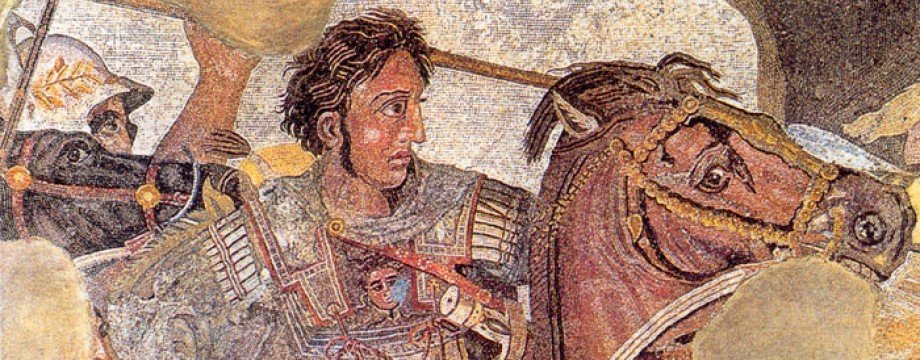334/333
Winter Alexander conquers Caria, Lycia, Pamphylia and Phrygia (Landmark Arrian*, Livius)
Winter Alexander son of Aeropos arrested (Landmark Arrian)
Winter Alexander subdues Pisidians (Landmark Arrian)
333/332
Winter Alexander asks Tyrians permission to sacrifice to Herakles in Tyre (Landmark Arrian)
332
January (?) Byblos and Sidon submit to Alexander (Peter Green**)
January-July The Siege of Tyre (Livius, Michael Wood***)
NB Landmark Arrian says that the siege took place between winter and summer
332/331
Winter Alexander into Egypt (Landmark Arrian, Wood)
Winter Alexander is informed that the Persian Navy has been defeated in Aegean (Landmark Arrian)
Mid-winter Alexander visits Siwah (Wood)
331
January Alexander in Heliopolis and Memphis (Livius)
January Alexander founds Alexandria (Wood)
NB Landmark Arrian says Alexandria was founded in ‘winter’
331/330
Winter Alexander takes Susa (Landmark Arrian)
330
Winter Macedonian army enters Persia (Wood)
20th January Battle of the Persian Gates (Livius)
30th January Alexander arrives at Persepolis (Livius)
Jan-May Alexander at Persepolis (Livius)
NB Wood agrees that the Battle of the Persian Gates and Alexander’s arrival in Persepolis both took place in January but doesn’t give the specific date of either event; Green places the sack of Persepolis in January but only with a question mark next to the date
330/329
Winter Spitamenes’ second revolt takes place (Landmark Arrian)
329
January Alexander approaches Kabul (Wood)
329/328
Winter Alexander at Zariaspa (Green, Livius, Wood)
Winter Alexander gives orders for Bessos to be mutilated (Landmark Arrian)
328/327
Winter Alexander at Maracanda (Livius)
Winter Alexander is based at Nautaca (Livius, Wood)
Winter While in Nautaca, Alexander appoints new satraps (Landmark Arrian)
Winter The Rock of Sisimithres is captured (Wood)
Winter After the Rock of Sisimithres falls, Alexander returns to Zariaspa (Wood)
Winter Callisthenes refuses to perform proskynesis to Alexander (Landmark Arrian)
327/326
Winter Alexander stops at Maracanda and Nautaca (Livius)
Winter Hephaestion to the Indus via Khyber Pass (Wood)
Winter Alexander enters the Swat Valley and campaigns there (Wood)
Winter Macedonians at Nysa [where they get drunk en masse] (Wood)
Winter Alexander attacks the Massaga (Wood)
326/325
Winter Alexander campaigns against the Mallians and is badly wounded. His men are unsettled until they see him alive (Landmark Arrian)
Winter Mallians and Oxydrakai submit (Landmark Arrian)
325
January Alexander campaigns against the Mallians and is wounded (Livius)
NB Wood has the Mallian campaign taking place in December
325/324
Winter Alexander reunites Nearchus and Craterus in Carmania (Landmark Arrian)
Winter Alexander Return to Persepolis (where he orders Orsines to be executed (Landmark Arrian)
Winter Alexander visits Pasargadae where he orders Cyrus the Great’s tomb to be restored (Landmark Arrian)
324
January Alexander meets Nearchus in Carmania (Green, Livius)
January Alexander returns to Persia (Wood)
January Alexander’s second visit to Persepolis; also visits Pasargadae (Wood)
324/3
Winter Alexander requests divine honours for Hephaestion (Livius)
Winter Alexander campaigns against Cossaeans (Landmark Arrian, Livius)
* The Landmark Arrian Ed. James Romm (Pantheon Books 2010)
** Green Alexander of Macedon 356 – 323 B.C. A Historical Biography (University of California Press 1991)
*** Wood In the Footsteps Of Alexander the Great A Journey from Greece to India (BBC Books 2004)
***
Notes
- This chronology is part of an on-going work. If you see any mistakes or omissions please feel free to let me know.
- As can be seen, I have noted where The Landmark Arrian, Livius, Michael Wood and Peter Green have disagreed on the dates; these notes, however, are not comprehensive. My focus has been on recording what each author has said rather than synthesising the dates.
Alternative/Modern Names
Nautaca - ‘Uzunkir near Shakhrisyabz’ (Wood)
Nysa – Jelalabad
Zariaspa aka Bactra - Balkh
